Your Ultimate Travel Guide To Kote Venkataramana Temple To Seek Spirituality In 2026
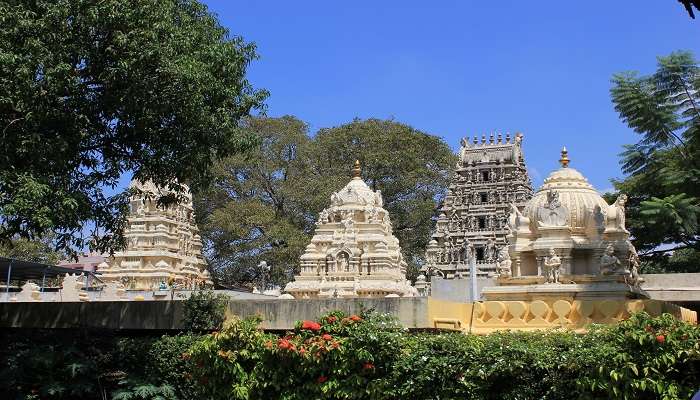
One of the oldest and most well-known Hindu shrines, the Kote Venkataramana Temple, is dedicated to Lord Venkateshwara in the heart of the bustling metropolis Bangalore in Karnataka. Its kaleidoscopic historical past and architectural excellence attract pilgrims and tourists who visit this place for spiritual solace, historical interest, or cultural exposure. Whatever your reason for visiting may be, Kote Venkataramana Temple will turn out to be a new experience by itself. In order to get the best out of this visit, one has to be well-equipped. Practical information and advice that will help you during your visit to ensure a rewarding and respectful experience at this beautiful temple.
Kote Venkataramana Temple Puja Timings
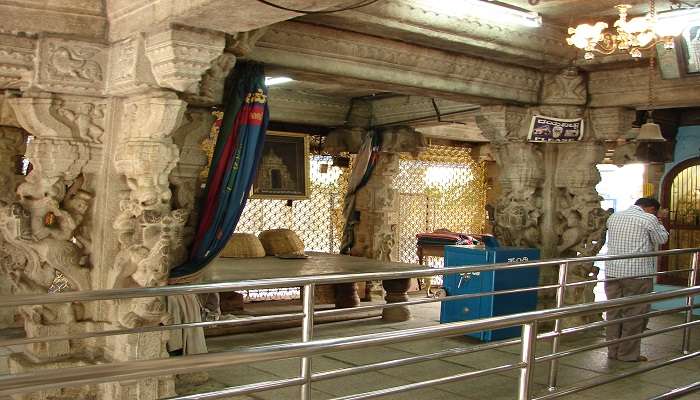
Kote Venkataramana Temple has a clear time schedule for daily rituals and pujas so that devotees can witness or participate in the ceremonies. The temple usually opens as early as 6:00 AM, followed by the first puja shortly after, to awaken and worship the deity.
Other rituals have different timings during the day, with offerings at mid-morning and noon, which are coupled with traditional chants and hymns. The evening aarti takes place around 6:00 PM when throngs of people come to visit. The temple stays open till 8:00 PM after the final rituals are performed. One, however, should check the timings of the particular day of visit since it might differ on festive occasions or special days.
Must Read: Mallalli Falls
Kote Venkataramana Temple History
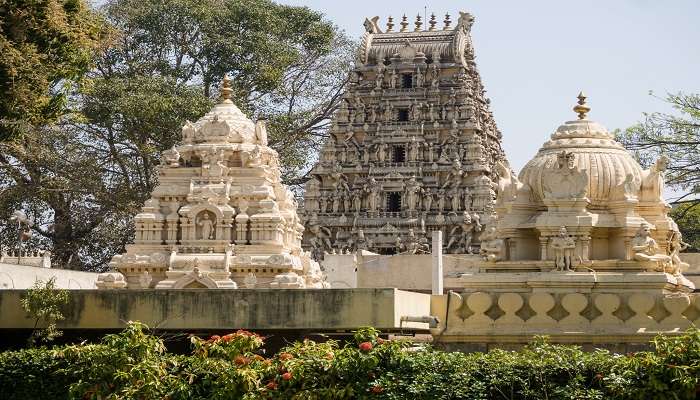
Kote Venkataramana Temple is immersed in a tradition dating back to the 17th century. Built during the patronage of the then-Mysore ruler, Chikka Devaraja Wodeyar, it epitomised the architectural grandeurs and religious ties of that age. The architecture in the Dravidian style, expounded by intricate carvings, towering gopurams at the entrance, and detailed sculptures, testifies to the artistic excellence of the time. Leaving aside the spiritual purpose of the temple, throughout history, it has been one of the prime cultural centres.
All the important events and royal ceremonies used to take place at this temple. It continues to attract historians, architects, and devotees through its historical and architectural value, thereby retaining the wonderful tradition of Karnataka’s cultural heritage.
Kote Venkataramana Temple Style And Architecture
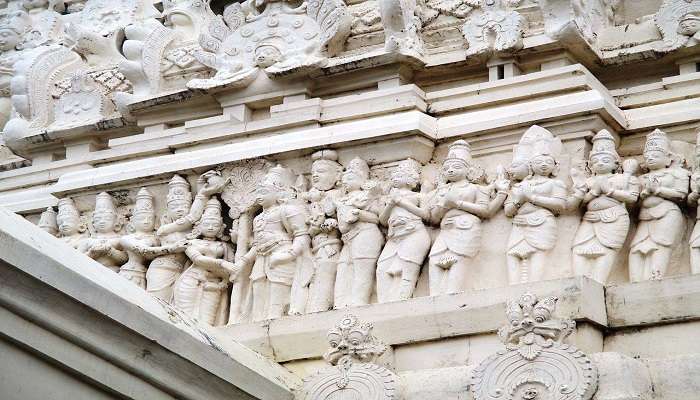
The Kote Venkataramana Temple is typical of the Dravidian style, executed with finely finished gopurams and an elaborately decorated vimana. The temple structure comprises a big mandapa supported by intricately carved pillars, opening into the garbhagriha that enshrines the deity.
The floor has been laid out so that devotees must keep moving from one place to another, with space marked out for various rites and ceremonies. The architecture of this temple, through symmetry, impressiveness, and dedication, reflects not only the artistic greatness of the 17th century but also the religious and cultural values of that time.
Tip: Plan your visit in such a way that you can combine it with temple puja timings. Early morning and evening aartis do exist, catering to serene and devotional atmospheres. Reaching at special times like this is also very good because it allows you to see traditional ceremonies and avoid midday crowds as well.
Suggested Read: Nisargadhama Deer Park
Sculptures And Decorative Elements
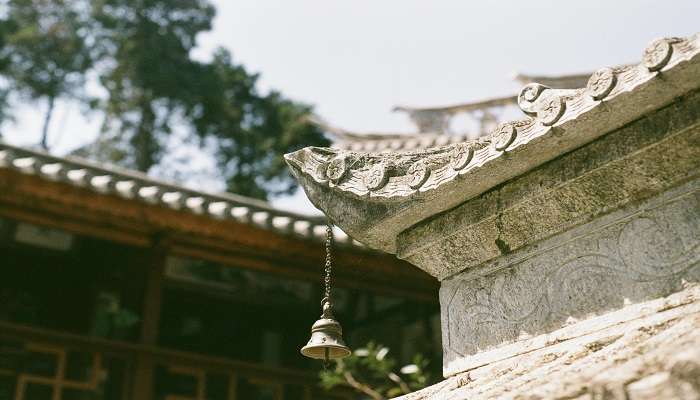
Various sculptures and decorative mottoes further enhance the aesthetic and spiritual beauty of Kote Venkataramana Temple. Elaborate carvings on the walls and pillars of this temple, narrate scenes from Hindu mythology, and depict celestial beings and flowers. Gopurams are decorated with images of many deities, minutely tailored to highlight finesse in features and expressions.
The ornate doorway and detailed sculptures wall-mounting the main deity within the central sanctum are unique. Much more than serving as a means of enhancing the visual splendour of the temple, these art forms also function in this temple as a narrative device to bring out minute details of the religious stories and cultural traditions before devotees and visitors.
Tip: Since Kote Venkataramana Temple is a place of worship, one should dress decently and respectably. Traditional Indian attire, such as sarees or salwar kameez for women and kurta-pyjamas for men, would be appropriate. Remove your shoes before entering the temple premises as a mark of respect toward the holy place.
Kote Venkataramana Temple Nearby Attractions
A visit to the Kote Venkataramana Temple means a close peep into Bangalore’s rich cultural and spiritual heritage. To pilgrims and tourists, mighty Dravidian architecture, intricate sculptures, and a tranquil atmosphere feel special.
This is supplemented by several other attractions within its immediate vicinity, including Tipu Sultan’s Summer Palace, Bangalore Fort, Krishna Rajendra Market, and Lalbagh Botanical Garden. Together, they create a set of varied historical, cultural, and natural slips to explore. In combination, they tend to give the essence of Bangalore, making the whole area surrounding Kote Venkataramana Temple exuberant and worthwhile for every traveller.
1. Tipu Sultan’s Summer Palace
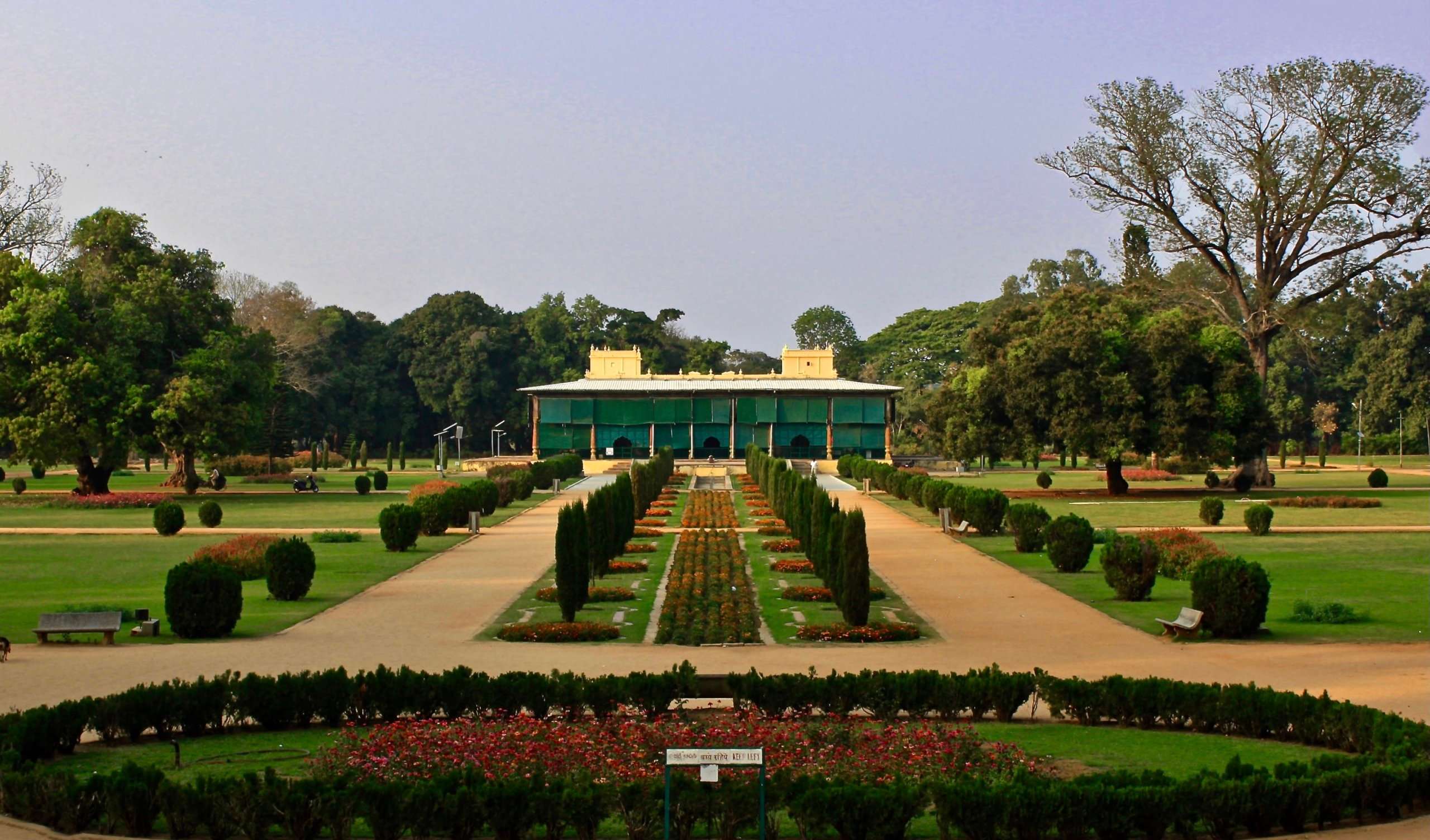
Just a short drive from the Kote Venkataramana Temple is located in the Summer Palace of Tipu Sultan, an exquisite example of Indo-Islamic architecture. This summer palace for the Kingdom of Mysore’s ruler, Tipu Sultan, was built in 1791.
The visitor can view the exquisitely decorated halls, arches, and balconies and learn about the Sultan’s life and times. The palace also accommodates a small museum with artefacts and exhibits of great historical importance related to Tipu Sultan’s reign.
Location: XH5F+PFR, Tippu Sultan Palace Rd, Chamrajpet, Bengaluru, Karnataka 560018
Timings: 8:30 am to 5:30 pm
Suggested Read: Places To Visit In Shimoga Within 100 Kms
2. Bangalore Fort
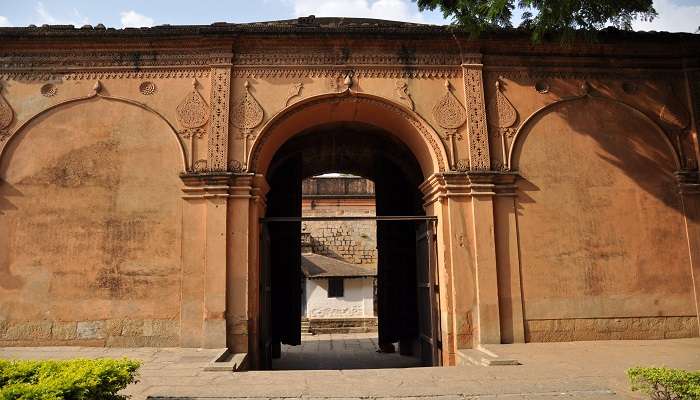
Another significant historical monument located close to the Kote Venkataramana Temple is the Bangalore Fort. Built by Kempe Gowda I in 1537 and further enlarged by Tipu Sultan, the fort represents Bangalore’s past.
Although most of it has been lost through time and urban development, the remaining part has the Delhi Gate and the original fortifications, which essentially conceptualise this city’s dream. This is an ideal viewpoint for history lovers and those interested in the architectural remains left by Bangalore from its past.
Location: XH7G+49C, Krishna Rajendra Rd, New Tharagupet, Bengaluru, Karnataka 560002
Timings: 8:30 am to 5:30 pm
3. Krishna Rajendra Market
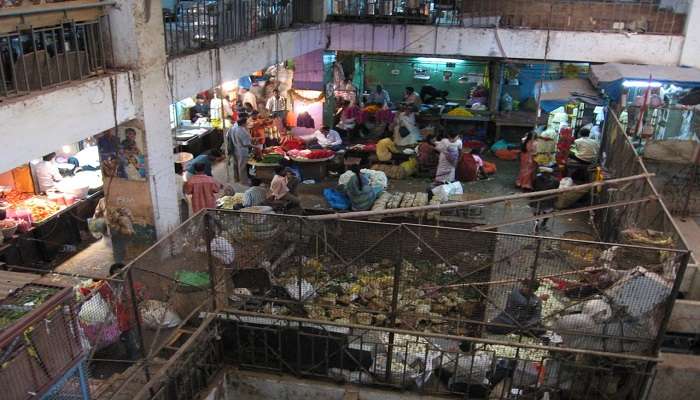
To experience something lively and crowded, Krishna Rajendra Market, or KR Market, is a local point of interest worth visiting. This open market is among the oldest and largest Traditional marketplaces in Bangalore, where visitors would experience a bombardment of colours, sounds, and smells.
The market has everything from fresh fruits and vegetables to flowers, even spices and textiles. It’s an excellent place to soak in the daily life of Bangaloreans and shop for unique souvenirs among local goods.
Location: in front of Vanivilas Hospital, Chikkanna Garden, Kalasipalya, Bengaluru, Karnataka 560002
Timings: Open 24 hours
Suggested Read: Shopping In Shimoga
4. Lalbagh Botanical Garden

A short drive from the Kote Venkataramana Temple brings one to the serene Lalbagh Botanical Garden. This tract of 240 acres was commissioned by Hyder Ali and later completed by his son, Tipu Sultan.
Lalbagh is well known for its varied collection of tropical plants, beautiful glasshouses, and serene lakes. It presents an ideal setting for a quiet stroll, a family picnic, or just seeing the beauty of nature and the horticultural wealth of Bangalore.
Location: Mavalli, Bengaluru, Karnataka 560004
Timings: 6:00 am to 7:00 pm
5. Bull Temple

The Dodda Basavana Gudi, or the Bull Temple, is another attraction that can be reached on foot and is situated in Basavanagudi. The temple houses a huge granite statue of Nandi, the sacred bull of Lord Shiva.
It is one of the largest Nandi statues in India, making the temple, as a whole, an extensive pilgrim centre and architectural splendour that attracts devotees and tourists by heaps. This is the venue of the famous annual Kadalekai Parishe, where a confluence of groundnut traders meets with great cultural significance and attracts large crowds.
Location: Bull Temple Rd, Basavanagudi, Bengaluru, Karnataka 560019
Timings: 6:00 am to 12:00 pm and 5:30 pm to 9:00 pm
Further Read: Gokarna Beach Resorts
Enthral yourself with the history and tranquil spiritual atmosphere of Kote Venkataramana Temple. Observe the nearby places, realise the cultural heritage of Bangalore, and create incomparable memories throughout. All you have to do is plan your trip to Karnataka today to experience all the historical and cultural treasury together!
For our editorial codes of conduct and copyright disclaimer, please click here.
Cover Image Credit: Dineshkannambadi for Wikimedia Commons
Frequently Asked Questions About Kote Venkataramana Temple
What are the visiting hours of the Kote Venkataramana Temple?
The general working hours start from 6:00 AM and go on till 8:00 PM. However, timings may differ during festivals or other establishments; hence, it's better to check the timings prior to visiting.
Are there any entrance fees for entering the Kote Venkataramana Temple?
Entry to the temple is free; it is open to all visitors across the globe who come to offer prayers or explore the site.
What is the best time to visit Kote Venkataramana Temple?
The best time would be in the early morning or evening hours when the crowd reaches its minimum. Moreover, the major festivals of the Hindus attract a different hue while visiting this place.
Are there any guidelines for the dress code or conduct inside the premises of the temple?
Yes, visitors are supposed to be modestly and respectably dressed. Traditional clothes are much appreciated, and shoes need to be removed outside the sanctum sanctorum area. A quiet and neat demeanour is also appreciated.
What else is near Kote Venkataramana Temple?
Their environment encompasses the Summer Palace of Tipu Sultan, Bangalore Fort, Krishna Rajendra Market, Lalbagh Botanical Garden, and a temple in the centre of the city known as the Bull Temple. These places reflect a combination of historical, cultural, and natural preserves for visitors.
People Also Read:
Bull Temple Chaturbhuj Temple Arulmigu Ramanathaswamy Temple

Unveil the hidden treasures of the globe and turn every travel dream into reality. As a Content Writer, I am passionate enough to craft stories from ancient wonders to modern marvels. My words paint the picture-perfect itinerary for unforgettable experiences. Let my words be your trusted guide to immerse in the diverse culture and discover the beauty of the unknown.











